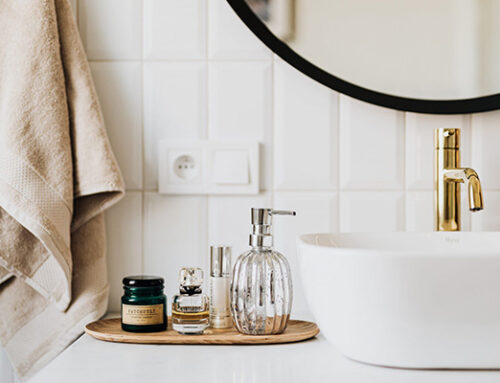In an average household, what room contains the most bacteria? A lot of people immediately think the answer is the bathroom, but the truth is, it’s the kitchen!
From Escherichia coli and salmonella to streptococcus and staphylococcus bacteria, kitchens are the most contaminated parts of just about any home. The worst part is that bacteria can easily spread from the kitchen to anywhere in the house or even into our food and drinks without us realizing it, causing diseases to people or pets living in the house.
So, it’s important to take all the necessary measures to control bacterial spread and cross-contamination. Today, our East London end of tenancy cleaners are sharing the insiders’ guide to reducing bacteria in the kitchen.
Where do Bacteria in the Kitchen Come from?
To better fight the spread of bacteria in your kitchen, you should know the possible sources of contamination you may be dealing with.
Contact
Contact is the main way bacteria, viruses, and other contaminants cause infectious diseases such as flu, colds, digestive issues. This contact could happen when a person carrying the bacteria directly handles food that healthy individuals consume or utensils that they use.
Poultry, Meats, and Fish
The thing about poultry, meats, and fish is that they’re home to many types of harmful bacteria while raw. Escherichia coli -or E.coli for short- is one example of such bacteria, a very serious one at that.
According to the Centers for Disease Control and Prevention, E.coli includes a diverse group of tiny organisms responsible for a wide array of foodborne diseases.
E.coli is also the primary culprit behind the hemolytic uremic syndrome in kids as well as adults. This disease often leads to death.
Poultry, Chicken, and Turkey
These foods are known to contain salmonella, shigella, and campylobacter bacteria that commonly cause cramps, diarrhea, and fever.
Seafood
When it comes to seafood contaminated with bacteria, shellfish -such as oysters and clams- are on top of the list. Examples of bacteria present in these foods include Vibrio species that induce diarrhea.
Unpasteurized Cheese
If you bring unpasteurized cheese into your kitchen, you should know that you’re risking contamination with Listeria monocytogenes. This bacteria causes listeriosis when ingested, which can ultimately lead to death in young children, elderly people, and immunocompromised individuals.
Listeria is commonly present in brie cheese and other types of soft cheeses. It can also survive in a variety of environments, even under refrigeration.
Fruits and Vegetables
Unwashed fruits and vegetables can carry a vast range of microorganisms and bacteria depending on their growth location and processing procedures.
What Gets Contaminated in the Kitchen?
Various surfaces and items in your kitchen can get contaminated through any of the methods we discussed above. So what parts of the kitchen typically carry and spread bacteria? Well, here’s a quick breakdown:
- People in the kitchen — this is the number one way of spreading bacterial contamination. People often forget -or ignore- washing their hands before and after handling possibly contaminated foods.
They also overlook washing their hands between handling foods that are more likely contaminated -such as poultry and meats- and other foods with lower chances of being contaminated -such as fruits and veggies -.
- The kitchen sink — this is one of the most likely contaminated surfaces in any kitchen because that’s where all the meat cleaning, vegetable/fruit washing, and dumping of waste happens.
- Counters — this is also highly probable if you don’t use cutting boards to cut meats, produce, and other ingredients. Other than food and food-related items, countertops can also witness contaminated things like mail and grocery bags.
- Gadgets such as:
- Can openers
- Sponges
- Towel
- Garbage disposals
- Appliances such as:
- Refrigerators
- Coffee makers
- Food processors
- Blenders
How to Reduce Bacteria in the Kitchen
The following tips will help you reduce bacteria and cross-contamination in your kitchen:
- Wash your hands thoroughly with regular soap before and after handling any food.
- Wash your hands between different foods when preparing a meal.
- Use bleach or disinfectant to clean can openers then let them air dry.
- If possible, use 2 different cutting boards; one for meats and one for produce.
- Clean your cutting boards after every use. Apply bleach or disinfectant on the meats’ cutting board then let it air dry. Don’t forget to rinse it with water to get rid of lingering bleach or disinfectant taste.
- Thoroughly wipe your countertops using bleach solution or disinfectant then let them air dry. Clean them well.
- Avoid using sponges in the kitchen.
- If you use towels and dish rags to clean up spills or dirt, throw them in the laundry afterward and grab fresh ones.
- Use a clean dish rag or towel every day.
- Wipe your sink with a bleach solution or disinfectant at the end of each day.
- Every week, pour a cup of hot water down the sink at the end of the day. After a minute or two, pour a cup of undiluted bleach and let it stand overnight.
- To get rid of the bacterial build-up on the inside of the garbage disposal, use a combination of bleach and a long brush to scrub it clean. Let the cleaning solution sit until the next use.
- Schedule a routine cleaning session for your refrigerator every 3 months or so. After removing unwanted items, wipe the surfaces inside the fridge with a bleach solution or disinfectant. Let it air dry then put everything back in.
- In the event of spillage in the fridge, clean it as soon as possible. Don’t allow food to decompose or get moldy in your refrigerator.
- Appliances such as coffee machines, food processors, and blenders require regular cleaning to remove any food remnants or liquids.
Wrap Up
There you have it, the insiders’ guide to reducing bacteria in the kitchen.
It sure can seem scary knowing how much bacteria may be setting camp in your kitchen right now, but the good news is that the simplest cleaning and disinfecting habits can reduce contamination in that busy room and protect you from potentially fatal diseases.








